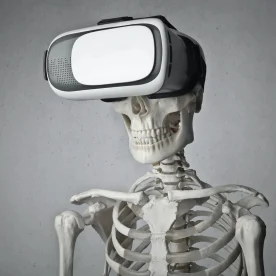What is the Metaverse?
In short – a digital space open to opportunities for people to be anything and pretty much do anything they can think of. Built on the foundations of immersive games such as Fortnite and Minecraft, the Metaverse is a digital world that may replicate real locations or be built out of pure fantasy with users able to make a true to life digital self using Unreal Engine’s MetaHuman Creator or simply appear as a cat if they wish. It’s safe to say that the scope and options available suggest we are entering a new dawn of interaction, both socially and with brands, we’ve not seen since the popular emergence of the internet itself.
How will brands benefit from the Metaverse?
Artists have already begun to make use of virtual spaces for concerts and performances to reach a much wider audience. DJ Marshmello recently performed a live virtual concert with 10 million concurrent viewers – an audience far greater than achievable in the real world for a single event (and realistically a larger audience than an entire month long traditional live tour – even with physically attending numbers in the tens of thousands.) While this may seem like a possible death of live music on the surface, the sheer feeling of being at a concert will never be replaced. It does however increase revenue for those people that couldn’t attend a tour due to travel, it increases revenue from those who couldn’t attend due to concerts being sold out and it exposes the artist to a much wider audience. Throw in the ability to make donations or purchase merchandise via the Metaverse and the inclusion of the Metaverse becomes an incredible source of revenue. I expect venues and companies such as Ticketmaster will begin to include live streaming options for many of their concerts in the next few years.
Whilst artists adapt to the changing platform as an extension of venues, companies with physical products will similarly adapt to creating virtual products for a virtual world. With Hyundai offering virtual test drives and Gucci offering virtual fashion shows (complete with the ability to purchase garments both digitally and physically) we will begin to see an era of the “digitally rich”. In 2018 – 2019 users of Fortnite spent over $9 billion dollars on in-game purchases – primarily on outfits for their avatar. It’s not unreasonable to think we will begin to see items, that are physically very expensive in the real world, being 3D modelled and sold for much lower prices to Meta users either to reflect who they are in reality or to those who wish to life a digital life they desire in reality. It’s not unlikely that we will begin to see the Metaverse very much as an advertising platform in the years to come as online influencers become paid to take their brands into the digital realm also.
Currently the Metaverse is probably too daunting a place for companies to invest in, but much like the internet boom in the late ‘90s early 2000s, those companies who don’t transition to the 3D world run the risk of being left behind.






